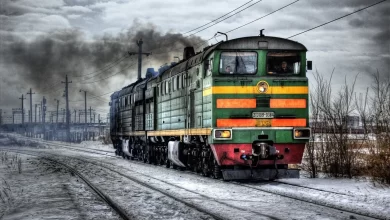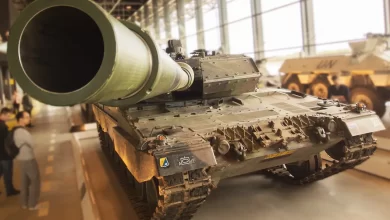Nuclear weapons are deadly weapons and have been used in a war two times. The consequences of their use put an end to the war, but at the same time, the bombs take the life of many people. Nuclear weapons create an unbearable danger to all of humanity, to the environment, and all living beings on the planet. It is difficult for total nuclear disarmament, but we can assure the world that an event like World War II will in no way happen again. The main job of nuclear weapons is to destroy. When these bombs were dropped during World War II, people were disintegrated and burnt to death.
- In theory, the nuclear bomb was first invented by nuclear physicists in a laboratory of Berlin, Germany, in the year 1938. The scientist who discovered the nuclear fission reaction was Otto Hahn, Lise Meitner, and Fritz Strassman.
- The main ingredient in a nuclear warhead is enriched uranium or plutonium, which can be obtained through the combustion of uranium. Uranium is a relatively common mineral and is found both in the ground and the sea.
- Atomic bombs are made up of a fissile element like uranium is enriched in the isotope that can sustain a fission nuclear chain reaction. When a free neutron hits the nucleus of a fissile atom like uranium-(235U) or plutonium (Pu), the uranium or plutonium splits into lighter atoms which results in a sudden powerful release of energy.
- Atomic bombs are measured in kilotons, each unit of which equals the explosive force of 1,000 tons of TNT. The explosive power of hydrogen bombs is frequently expressed in megatons, each unit of which equals the explosive force of 1,000,000 tons of TNT.
- A primary type of energy from a nuclear detonation is thermal radiation. Initially, most of this energy goes into heating the bomb materials and the air in the area of the blast. Temperatures of a nuclear explosion reach the temperature equivalent to that of the sun’s core which is about 100,000,000° Celsius.
- The world’s first nuclear detonation occurred on July 16, 1945. A plutonium implosion device was detonated at a site located 210 miles south of Los Alamos, New Mexico. The land was barren plains of the Alamogordo Bombing Range which is also known as Jornada del Muerto.
- On August 6, 1945, during World War 2, an American B-29 bomber dropped the world’s first nuclear bomb over the Japanese city of Hiroshima.
- On August 9, America deployed the second nuclear bomb on Nagasaki city.
- The Hiroshima bomb was about 15 kilotons, equivalent to that of 15 thousand tonnes of TNT. The bomb dropped on Nagasaki was of 25 kilotons.
- The bombing of Hiroshima and Nagasaki killed between 129,000 to 226,000 people.
- The nuclear arms race that originated during World War 2 reached a culminating point on October 30, 1961, with the detonation of the Tsar Bomba, the largest and most powerful nuclear warhead ever constructed. The bomb was equivalent to 50000 tonnes of TNT( 50 kilotons).
- The W54 was one of the smallest nuclear payload deployed by the United States. It was a very compact nuclear warhead, and was designed for tactical use, and had a very low yield for a nuclear weapon. It was in the range of 10 to 1,000 tons of TNT.
- Depending on several factors, the radiation of a nuclear bomb lasts 1 to 5 years.
- The top 3 countries with the most number of nuclear warheads are Russia with 6,375 nuclear warheads, the United States with 5,800 nuclear warheads, and China with 320 nuclear bombs.
- The volume the weapon’s energy spreads into varies as the cube of the distance, but the destroyed area varies at the square of the distance. Thus one bomb with a yield of 1 megaton would destroy 80 square miles(207.199 km). Whereas a nuclear warhead with a yield of 125 kilotons would destroy 160 square miles (414 sq. km).
- As of early 2020, the world combined inventory of nuclear warheads remains at a high level: roughly 13,410 warheads.
- The detonation of an atomic bomb creates radioactive dust that falls out of the sky into the area around the site of the explosion. Wind and water currents carry the dust across a much larger radius than the initial explosion, where it contaminates the ground, water supply, and the food chain.
- If a nuclear weapon is exploded in a vacuum-i.e., in space-the complexion of weapon effects changes drastically: First, in the absence of an atmosphere, the blast disappears completely. There is no longer any air for the blast wave to heat, and much higher frequency radiation is emitted from the weapon itself.
- Has anyone detonated a nuke in space?
On July 9, 1962, the United States conducted the ‘Starfish Prime’ nuclear test, one of a series of five aimed at testing the effects of nuclear weapons in high altitudes / lower outer space. The explosion took place 400 kilometers above the Johnston Atoll in the Northern Pacific Ocean. - Death is highly likely, and radiation poisoning is almost certain if one is caught in the open with no terrain or building masking effects within a radius of 0–3 km from a one-megaton airburst, and the 50% chance of death from the blast extends out to ~8 km from the same one-megaton atmospheric explosion.
- For 20 years the launch codes of the nuclear arsenal in the United States was 00000000. Yes, you got it right eight times zero.
References
- History.com(where does first nuclear bomb was invented in theory)
- Pri.org(Main ingredient in NUclear warhead)
- Courses.lumenlearning.com(what causes the blast)
- Britannica-Kiloton(measurement of nuclear bombs)
- Atomicarchive.com
- Energy.gov(The worlds first nuclear detonation)
- History.com(Bombing of Hiroshima and Nagasaki)
- World-nuclear.org(Hiroshima and nagasaki Bomb size)
- Wikipedia-Bombing of Hiroshima and Nagasaki(People killed in nagasaki and hiroshima nuclear blasts)
- Wikipedia-Tsar Bomba
- Wikipedia-W54(The smalleset nuclear warhead)
- Cnbctv18.com(countries with most nuclear arsenal
- Atomicarchive.com
- Fas.org
- Sciencing.com(Atomic bombs create nuclear dust)
- Ctbto.org(Starfish Prime nuclear test)
- Wikipedia-Effects of nuclear explosion
- Nakedsecurity.sophos.com/(for 20 years the launch codes of united states)






